Musée du noeud Dong-Lim (동림매듭박물관)
1.8Km 2021-03-27
10, Bukchon-ro 12-gil, Jongno-gu, Seoul-si
+82-2-3673-2778
Le musée du noeud Donglim ouvert en avril 2004 vous fait découvrir les noeuds décoratifs traditionnels coréens maedeup comme le norigae pour le hanbok, mais vous pourrez aussi y voir des ceintures et bourses traditionnelles et des matériaux comme du fil, de la corde ou encore des accessoires. Situé dans une maison traditionnelle hanok, on y trouve plusieurs créations, anciennes et modernes, ainsi que des créations qui reflètent les tendances d'aujourd'hui.
Aneuk Hotel & Spa – Jongno Unni (아늑호텔 앤 스파 종로운니점)
1.8Km 2025-05-07
89, Donhwamun-ro 11ga-gil, Jongno-gu, Seoul
Musée des gâteaux de riz (떡박물관)
1.8Km 2021-10-06
71, Donhwamun-ro, Jongno-gu, Seoul-si
+82-2-741-5447
Le musée des gâteaux et articles de cuisine traditionnels expose par thème et usage une collection d’environ deux milles pièces depuis des articles de cuisine en voie de disparition jusqu’aux objets relatifs aux gâteaux. C’est un endroit qui vous permettra de comparer les cuisines et habitudes culinaires d’hier et d’aujourd’hui. La plupart des objets exposés ici ont été taillés, tressés et tissés à la main. Quoique simples, ces articles reflètent divers aspect de la vie du peuple qui y tenait beaucoup. Ce musée évoque souvenirs et nostalgie aux personnes âgées, alors que les citadins et les jeunes générations peuvent y découvrir la vie et la sagesse des ancêtres à travers divers ustensiles de cuisine qui disparaissent de plus en plus de nos jours.
Myeongdong Guesthouse Como / 명동게스트하우스 꼬모
1.8Km 2025-08-12
12, Toegye-ro 24-gil, Jung-gu, Seoul
+82-2-755-5437
This guesthouse is located only 3 min away by foot from the Myeongdong Station on Seoul Subway Line 4. It is a particularly popular guesthouse for international travelers, assisted by front staff proficient in English and Chinese. The guesthouse offers free luggage storage services.
Even though Como is a guesthouse, it occupies a sizable 4-story building. The first-floor lobby offers breakfast in the morning hours, while the rooftop offers a panoramic view of the Seoul city center.
Bedrooms are fitted with lemon-colored walls and white bedding. Excellent amenities like WiFi, TV, air conditioning, and refrigerator are designed for the benefit of the guests. In particular, guests have access to bathrooms with shower in each of the rooms. There are five types of rooms in total, ranging from the Standard Single to Standard Quad for 4, offering a variety ideal for all arrangements.
The guesthouse also offers excellent walkable access to Myeongdong, one of the most popular shopping districts in Seoul, as well as major sights like N Seoul Tower, Sungnyemun Gate, and Namdaemun Market being reachable in 10 min by car.
Poste de lecture 'The Forest' sur le mont Inwangsan (인왕산 더숲 초소책방)
1.8Km 2025-04-18
172, Inwangsan-ro, Jongno-gu, Seoul (서울특별시 종로구 인왕산로 172)
Poste de lecture 'The Forest', situé dans le mont Inwangsan, fut inauguré dans un premier temps afin de protéger Cheong Wa Dae avant sa rénovation en espace culturel consacré à la lecture. Le site était en effet un poste de garde durant l'incident de Kim Shin-jo en 1968 et symbolise la douleur de la division des deux Corée. Il est encore possible d'apprécier l'extérieur en brique des lieux et la porte en fer datant de l'époque. Le site est désormais un café lecture réputé pour sa vue sur la tour Namsan.
Quartier des bijoux de Jongno 3(sam)-ga (종로3가 귀금속 전문상가)
1.8Km 2025-10-23
Jongno 3(sam)-ga, Jongno-gu, Seoul-si
+82-2-1330
Avec ses nombreuses bijouteries grossistes et détaillantes, ce quartier offre des bijoux de divers designs à un prix très intéressant. Il y a autant de styles que de boutiques, ce qui rend ce quartier populaire surtout pour les futurs mariés et les touristes étrangers. Le grand avantage est que l’on peut y bénéficier d’une réduction de 30 à 40% par rapport aux prix courants.
Divers bijoux à prix de gros
Le quartier des bijoux de Jongno englobe en général les environs de Jongno 3(sam)-ga, allant de Jongno 1(il)-ga jusqu’à Jongno 5(o)-ga en passant par le cinéma « Danseongsa ». Le nombre des magasins installés dans ce quartier s’élève à plus de mille, et celui des ateliers de fabrication dépasse 300. Il y a également une vingtaine de centre d’évaluation aux alentours.
Le premier quartier des bijoux est né dans le quartier « Yeji-dong », puis il s’est étendu jusqu’au quartier « Bongik-dong » près du cinéma « Danseong-sa ». A mesure que le quartier s’agrandissait, de plus en plus de bijouteries s’installaient autour du boulevard principal qui mène de Jonggak jusqu’à Jongno 5(o)-ga. Pourtant, chaque quartier garde toujours son identité.
Connu pour les montres décorées principalement de pierres brutes, « Yeji-dong » est appelé « quartier des montres ». Avec « Yeji-dong », « Bongik-dong » est aussi un quartier où sont rassemblés bien des grossistes. On y trouve de nombreuses bijouteries spécialisées en or pur ou en collier chaîne . Elles sont fréquentées par les intermédiaires et les grossistes venant des quatre coins de la Corée du Sud. Il est possible qu’un particulier y fasse ses achats, mais certains magasins grossistes ne le souhaitent pas. En revanche, les boutiques tenues par les détaillants installés le long du boulevard sont ouvertes aux particuliers. Dotés d’un aménagement intérieur moderne, ces nouveaux magasins présentent divers étalages. De plus, situés le long du grand boulevard, ils sont faciles à trouver. Les prix sont raisonnables et ils s’approchent de ceux des grossistes.
Les boutiques de ce quartier offrent divers produits et prix. Grâce à nombre de centres d’évaluations situés aux alentours, vous pouvez faire vos achats en toute confiance. Les magasins tiennent aussi des ateliers de fabrications communs. Si vous leur apportez une photo ou une brochure de votre modèle désiré, ces bijoutiers pourront vous faire le même style. Vous pourrez également bénéficier des services après-vente. Ici, il est possible d’acheter avec une réduction de 30 à 40% comparé avec d’autres quartiers, et ce pour de l’or ou du diamant à un prix de gros ; pour les montres, la réduction peut atteindre 50 ou 60%. Selon les articles, vous pourrez aussi acheter des bijoux pour la cérémonie de mariage. Cependant, les prix varient selon les vendeurs, il est donc conseillé de choisir l’article souhaité et de comparer les prix proposés en faisant un tour dans les boutiques avant de faire vos achats.
La réputation de ce quartier est aussi due au design de ses bijoux. Dès que sortent les nouvelles brochures des marques de luxe étrangères telles que « Cartier », « Tiffany », « Bulgary », le lendemain apparaissent les mêmes designs dans les boutiques. Depuis ces derniers temps, ce quartier est devenu célèbre aussi grâce aux accessoires portés par les vedettes coréennes Une bonne partie des accessoires qui ont été portés par elles et qui sont devenus à la mode sont nés de la coopération des commerçants du quartier avec les habilleuses lors de la conception de feuilletons télévisés. C’est la raison pour laquelle ce quartier est baptisé « Mecque des bijoux » portés par les vedettes. Les designs qui ont eu un grand succès sont, par exemple : les boucles d’oreilles de Lee Seung-Yeon et de Lee Yeong-Ae, les médailles de Jeon Ji-Hyeon et de Mun Hui-Jun. etc..
Tout cela attire les touristes étrangers, notamment les Japonais. Comparés au Japon, les prix sont beaucoup moins élevés, l’or et divers bijoux sont très appréciés par eux. Situé en plein coeur de Séoul, dans le quartier Jongno, ce quartier des bijoux est très facile d’accès, ce qui favorise les achats efficaces.
Théâtre de Changdeokgung (창덕궁 소극장)
1.9Km 2021-12-02
88-1, Donhwamun-ro, Jongno-gu, Seoul
+82-2-742-7278
Le Théâtre de Changdeokgung est situé en face du Palais Changdoeokgung dans la Zone Culturelle Spéciale Gungangno de Séoul. Les « Sogeukjan », signifiant petits théâtres, proposent une atmosphère unique et intimiste. Construites pour promouvoir la musique coréenne, la scène et les places sont arrangées pour que les membres du public aient à s’asseoir par terre, comme au restaurant traditionnel ou chez des coréens. Le théâtre propose une large gamme de spectacles, comprenant du Samulnori (instrument à percussion coréen traditionnel), de la musique traditionnelle, et du Madanggeuk (pièce infusée de musiques et de performances traditionnelles). Lors de leur première visite, les gens estiment que cette experience créative et intime créé des souvenirs impérissables concernant l’art et la culture de Corée. De plus, à proximité du théâtre se trouvent de nombreuses destinations touristiques comme les Palais Changdeokgung et Unhyeongung, le Parc du Temple Jongmyo et Insa-dong.
Musée de la Broderie Hansangsu (한상수 자수박물관)
1.9Km 2024-12-18
29-1, Bukchon-ro 12-gil, Jongno-gu, Seoul-si
+82-2-744-1545
Le musée, qui est situé dans Bukchon Hanok Village Gahoe-dong à Séoul, a sur les reliques d'exposition de broderie et de travaux liés à des Han Sang-soo, qui a été nommé culturel immatériel Asset n ° 80. Le musée a été créé pour promouvoir l'œuvre de broderie de Corée, de préserver les techniques traditionnelles, et encourager de nouvelles créations.
Les visiteurs peuvent voir l'exposition permanente et les expositions spéciales, et de prendre part régulièrement à des mains sur les programmes de broderie pour une somme de 3.000 gagné. Le programme fonctionne 10 heures-17 heures et ne nécessite pas une réserve. Le programme d'une heure débute avec une démonstration par un instructeur, après quoi les participants broder un mouchoir en suivant les instructions. Le mouchoir est à prendre à la maison après le programme est terminé. Des instructions sont données uniquement en coréen, tant d'étrangers sont invités à venir avec un guide local.
Musée du Vieux Parfum de Bukchon (북촌생활사박물관)
1.9Km 2021-03-27
90, Bukchon-ro 5na-gil, Jongno-gu, Seoul-si
+82-2-736-3957
Le Musée du quotidien de Bukchon expose des objets ayant été colléctés à Bukchon, village historique autrefois réservé à la noblesse. Pendant des centaines d’années, de vrais trésors dans chaque résidence furent légués de générations en générations mais depuis le développement rapide de la Corée, dans la seconde moitié du 20ème siècle, certains sont devenus obsolètes. Ouvert en 2003, le musée cherche à préserver des artéfacts en les présentant dans un environnement intime et accueillant où vous pouvez découvrir comment ils étaient utilisés au quotidien.
Les groupes de 10-15 personnes peuvent participer à des programmes leur permettant de fabriquer des objets traditionnels ou à des programmes pour prendre part à la réalisation de ssukgaetteok (gâteau de riz à base d’armoise).
Près du musée se trouvent de nombreuses attractions : le Village Hanok de Bukchon, le Parc Samcheong, le Musée des Hiboux, le Musée ToyKino, Musée des Bijoux du Monde, et le Musée des Palais Nationaux de Corée sans oublier les palais royaux comme celui de Gyeongbokgung.
Dialogue in the Dark – Bukchon (어둠속의대화 북촌점)
1.9Km 2025-07-04
Gahoe-dong, Jongno-gu, Séoul (Corée du Sud)
Située près du palais Gyeongbokgung, Dialogue in the Dark – Bukchon est une exposition participative sensorielle unique qui se déroule dans l’obscurité totale pendant 100 minutes. Accompagnés par un·e Roadmaster, les participants explorent différents environnements uniquement à travers les sens du toucher, de l’ouïe, de l’odorat et du goût.
Créée en Allemagne en 1988, cette exposition internationale a été présentée dans plus de 161 villes à travers le monde, touchant plus de 12 millions de visiteurs en Europe, en Asie et en Amérique.
Les visiteurs doivent arriver 15 minutes avant l’heure de réservation pour retirer leurs billets, déposer leurs affaires personnelles et se préparer à l’expérience. L’entrée se fait à l’heure exacte via un ascenseur menant progressivement vers une obscurité complète. Pendant 100 minutes, aucune sortie n’est possible ; il est donc essentiel d’utiliser les toilettes à l’avance.
L’exposition est située à 700 m de la sortie 2 de la station de métro Anguk (ligne 3). Le quartier de Bukchon et ses environs, proches du palais Gyeongbokgung, offrent également de nombreux cafés et restaurants à découvrir avant ou après l’expérience.
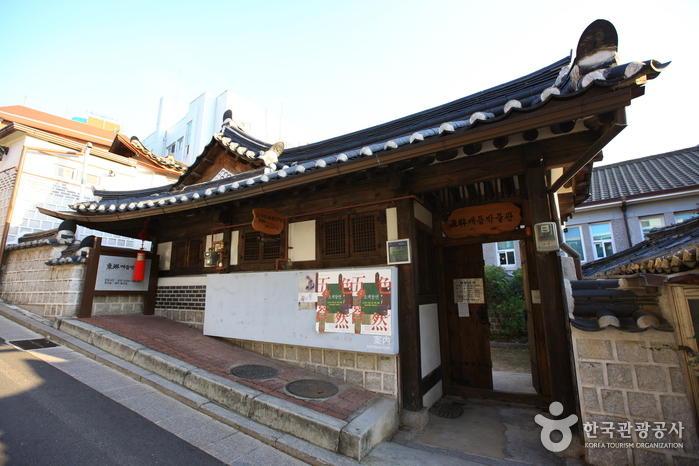
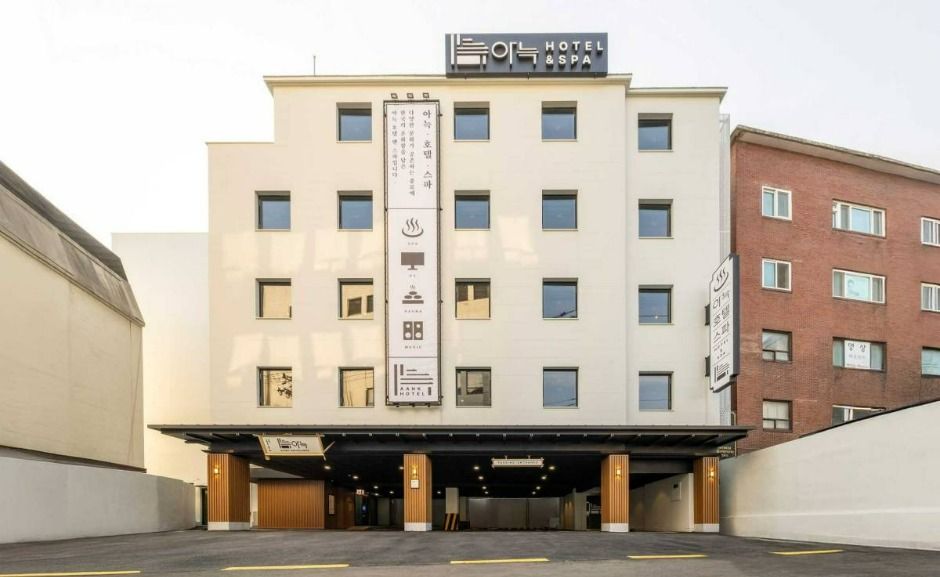
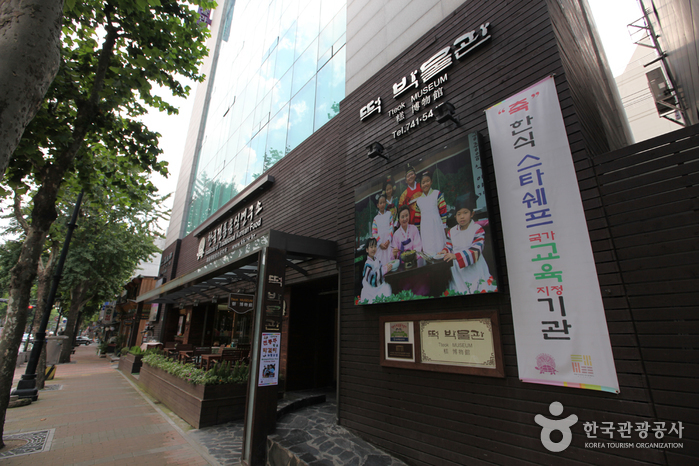
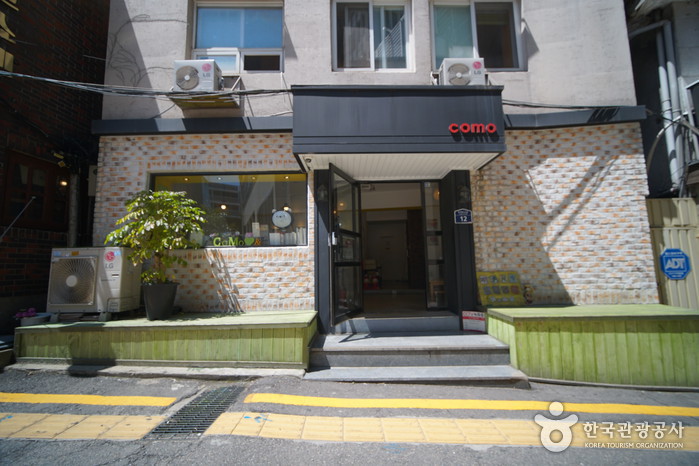
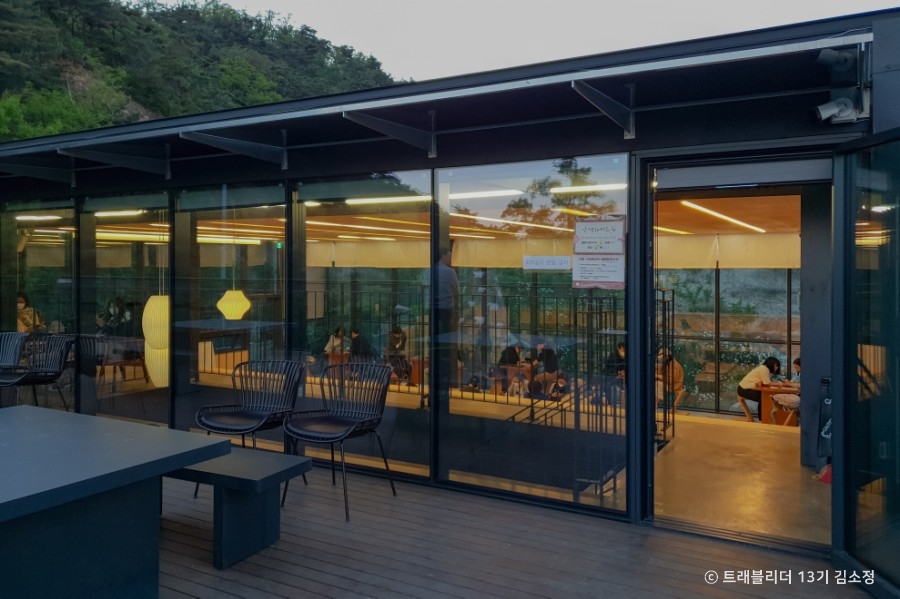
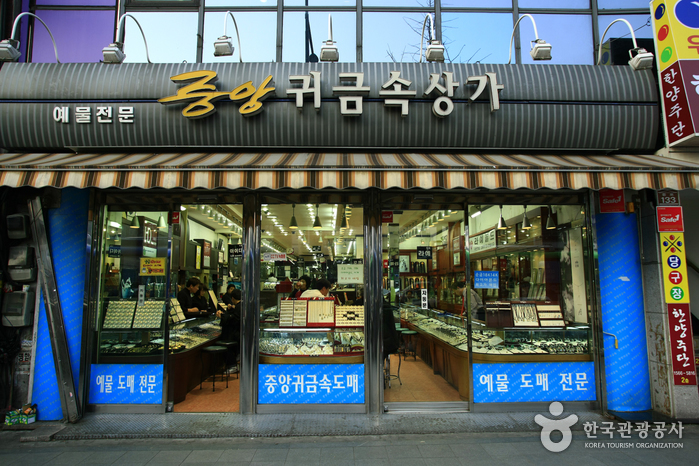
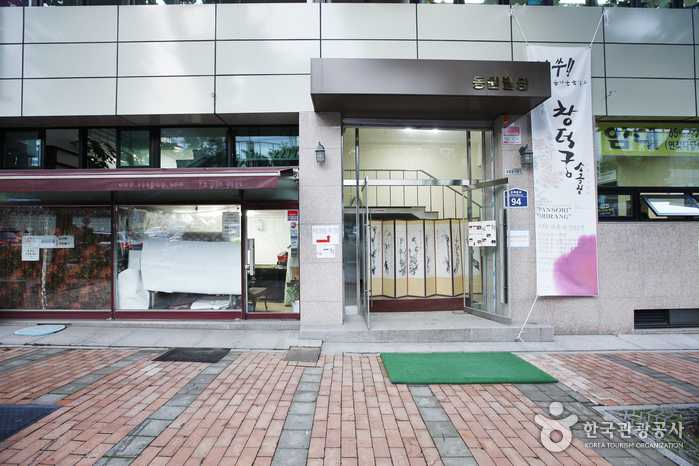
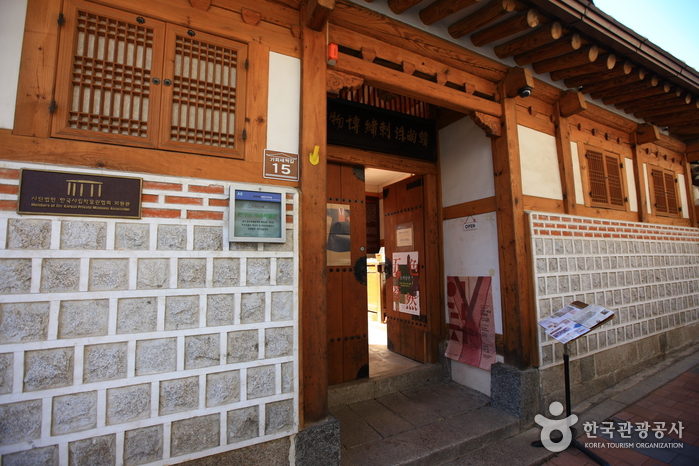
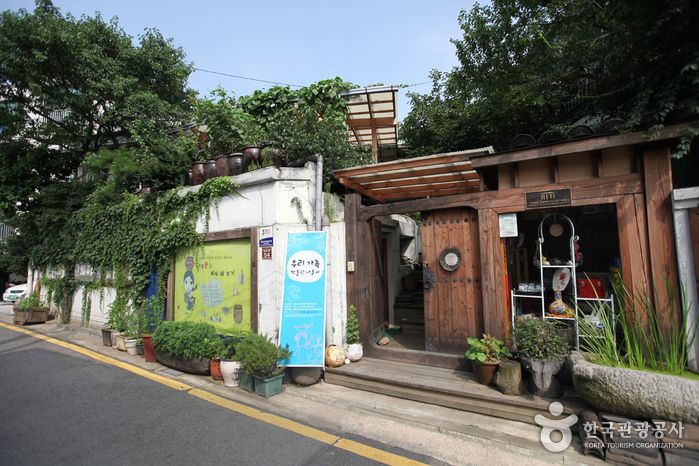
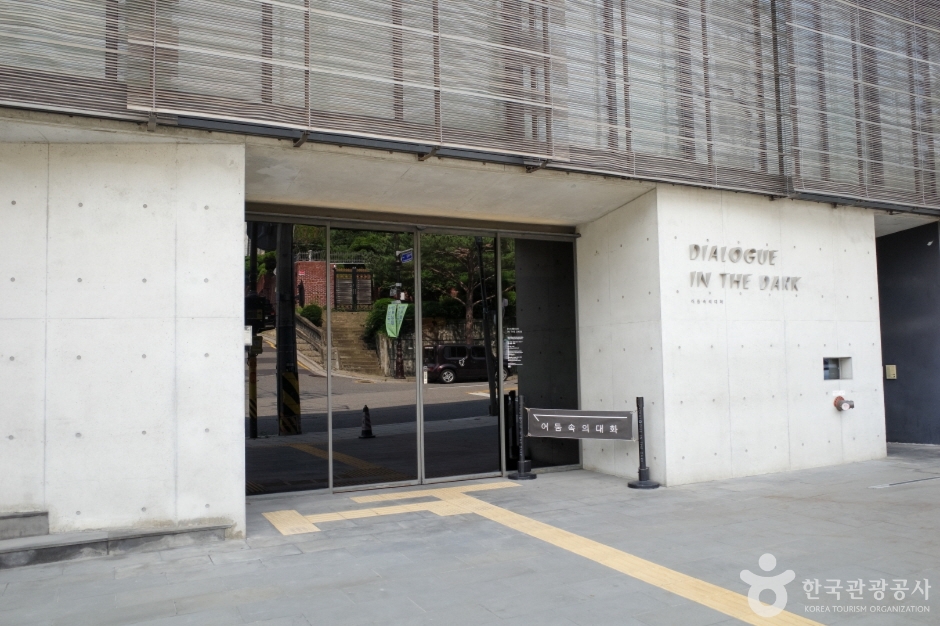
 Français
Français
 한국어
한국어 English
English 日本語
日本語 中文(简体)
中文(简体) Deutsch
Deutsch Español
Español Русский
Русский